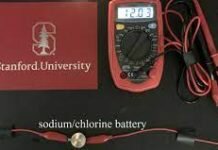
In the new study, reported on August 16, 2023, in Nature, the researchers identified a cluster of neurons that work as a “switch” for this cold-related, food-seeking behavior in mice.
The discovery could lead to potential therapeutics for metabolic health and weight loss.
“This is a fundamental adaptive mechanism in mammals and targeting it with future treatments might allow the enhancement of the metabolic benefits of cold or other forms of fat burning,” says study senior author Li Ye, PhD, associate professor and the Abide-Vividion Chair in Chemistry and Chemical Biology at Scripps Research.
Because exposure to cold leads to enhanced energy burning to stay warm, cold water immersion and other forms of “cold therapy” have been explored as methods for losing weight and improving metabolic health. One drawback of cold therapies is that humans’ evolved responses to cold are not designed to cause weight loss (an effect that could have been fatal during the frequent periods of food scarcity in pre-modern times). Cold, like dieting and exercise, increases appetite to counteract any weight-loss effect. In the study, Ye and his team set out to identify the brain circuitry that mediates this cold-induced appetite increase.
One of their first observations was that, with the onset of cold temperatures (from 73F to 39F), mice increase their food seeking only after a delay of about six hours, suggesting this behavioral change is not simply a direct result of cold sensing.
Using techniques called whole-brain clearing and light sheet microscopy, the researchers compared the activity of neurons across the brain during cold versus warm conditions. Soon they made a key observation: While most of the neuronal activity across the brain was much lower in the cold condition, portions of a region called the thalamus showed higher activation.
Eventually, the team zeroed in on a specific cluster of neurons called the xiphoid nucleus of the midline thalamus, showing that activity in these neurons spiked under cold conditions just before the mice stirred from their cold-induced torpor to look for food. When less food was available at the onset of the cold condition, the activity increase in the xiphoid nucleus was even greater—suggesting that these neurons respond to a cold-induced energy deficit rather than cold itself.
When the researchers artificially activated these neurons, the mice increased their food-seeking, but not other activities. Similarly, when the team inhibited the activity of these neurons, the mice decreased their food-seeking. These effects appeared only under the cold condition, implying that cold temperatures provide a separate signal that must also be present for appetite changes to occur.













































